In today's data-driven world, a robust data management framework is essential for your organization. It ensures data accuracy, reliability, and integrity, which are crucial for making informed decisions. By implementing such a framework, you can comply with regulations like GDPR and HIPAA, safeguarding sensitive information from unauthorized access and breaches. Moreover, aligning your data practices with strategic goals becomes seamless, enhancing operational efficiency. Tools like FineDataLink and FineBI play a pivotal role in streamlining data integration and analysis, empowering you to harness data's full potential for strategic growth.

Understanding the Data Management Framework
A data management framework serves as a comprehensive blueprint for managing your organization's data effectively. It provides a structured approach to ensure that data is accurate, consistent, and secure. By implementing this framework, you can align your data management activities with business objectives, treating data as a valuable organizational asset.
Definition and Purpose of a Data Management Framework
A data management framework consists of guidelines, processes, and procedures that help you manage data efficiently. It acts as a roadmap, outlining the key components and processes necessary for effective data management. This framework ensures that everyone in your organization understands their role in managing data, leading to consistent and effective data-related tasks. By establishing clear guidelines and responsibilities, you can maximize the value of your data assets and support strategic growth.
Key Components of a Data Management Framework
Data Governance
Data governance forms the backbone of a data management framework. It involves a set of guidelines, policies, and processes that govern how data is collected, stored, used, and protected within your organization. By implementing data governance, you ensure data quality, compliance with regulations, and efficient data management practices. This structured approach helps you manage data assets throughout their lifecycle, reducing vulnerabilities and managing risks effectively.
Data Quality
Ensuring data quality is crucial for making informed decisions. A data management framework emphasizes the importance of maintaining high data quality standards. By establishing clear policies and procedures, you can ensure that data is accurate, reliable, and consistent. This not only enhances decision-making but also builds trust in your data assets, enabling you to leverage them effectively for strategic growth.
Data Security
Data security is a critical component of a data management framework. It involves implementing measures to protect your data from unauthorized access, breaches, and other security threats. By prioritizing data security, you safeguard sensitive information and comply with relevant laws and standards. This not only protects your organization from potential risks but also enhances your reputation as a trustworthy entity.

Enhancing Decision-Making by Data Management Framework
In today's competitive landscape, making informed decisions is crucial for success. A robust data management framework empowers you to harness the full potential of your data assets, leading to smarter decision-making and strategic growth. By implementing such a framework, you can ensure data integrity, security, and operational efficiency, which are essential for maintaining a competitive edge.
Data-Driven Insights
Data-driven insights form the backbone of effective decision-making. With a data-driven insights framework in place, you can transform raw data into actionable insights. This framework provides a structured approach to collecting, storing, and analyzing data, ensuring that you have access to accurate and reliable information. As a result, you can make informed decisions that drive business success and enhance your organization's competitive advantage.
Organizations with data management frameworks report significant improvements in decision-making capabilities. By leveraging data-driven insights, you can identify trends, predict future outcomes, and make strategic decisions that align with your business objectives. This proactive approach enables you to stay ahead of the competition and capitalize on emerging opportunities.
Real-Time Analytics with FineBI
Real-time analytics is a game-changer in today's fast-paced business environment. FineBI, a powerful business intelligence tool, enables you to perform real-time data analysis, providing you with up-to-the-minute insights. With FineBI, you can connect to various data sources, analyze data in real-time, and share insights across your organization.
FineBI's real-time analytics capabilities enhance your decision-making process by providing instant access to critical information. You can track key performance indicators (KPIs), monitor trends, and respond quickly to changing business conditions. This agility allows you to make timely decisions that drive operational efficiency and strategic growth.
By integrating FineBI into your data management framework, you can unlock the full potential of your data assets. This integration ensures that you have access to accurate, reliable, and timely information, empowering you to make informed decisions that propel your organization forward.
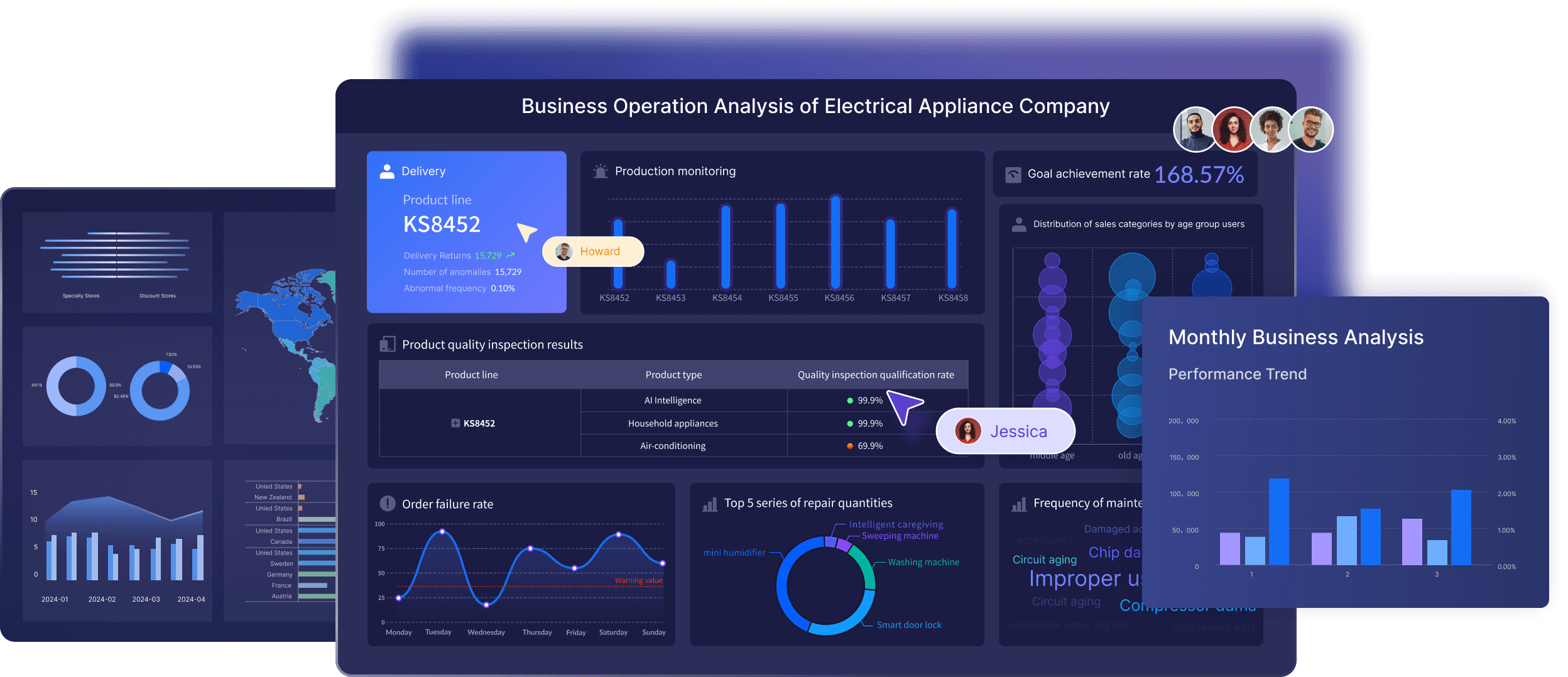
Boosting Operational Efficiency by Data Management Framework
Streamlined Processes with FineDataLink
You can significantly enhance your organization's operational efficiency by integrating FineDataLink into your data management framework. This powerful tool simplifies complex data integration tasks, allowing you to synchronize data in real-time across various platforms. By doing so, you eliminate data silos and ensure seamless data flow throughout your organization.
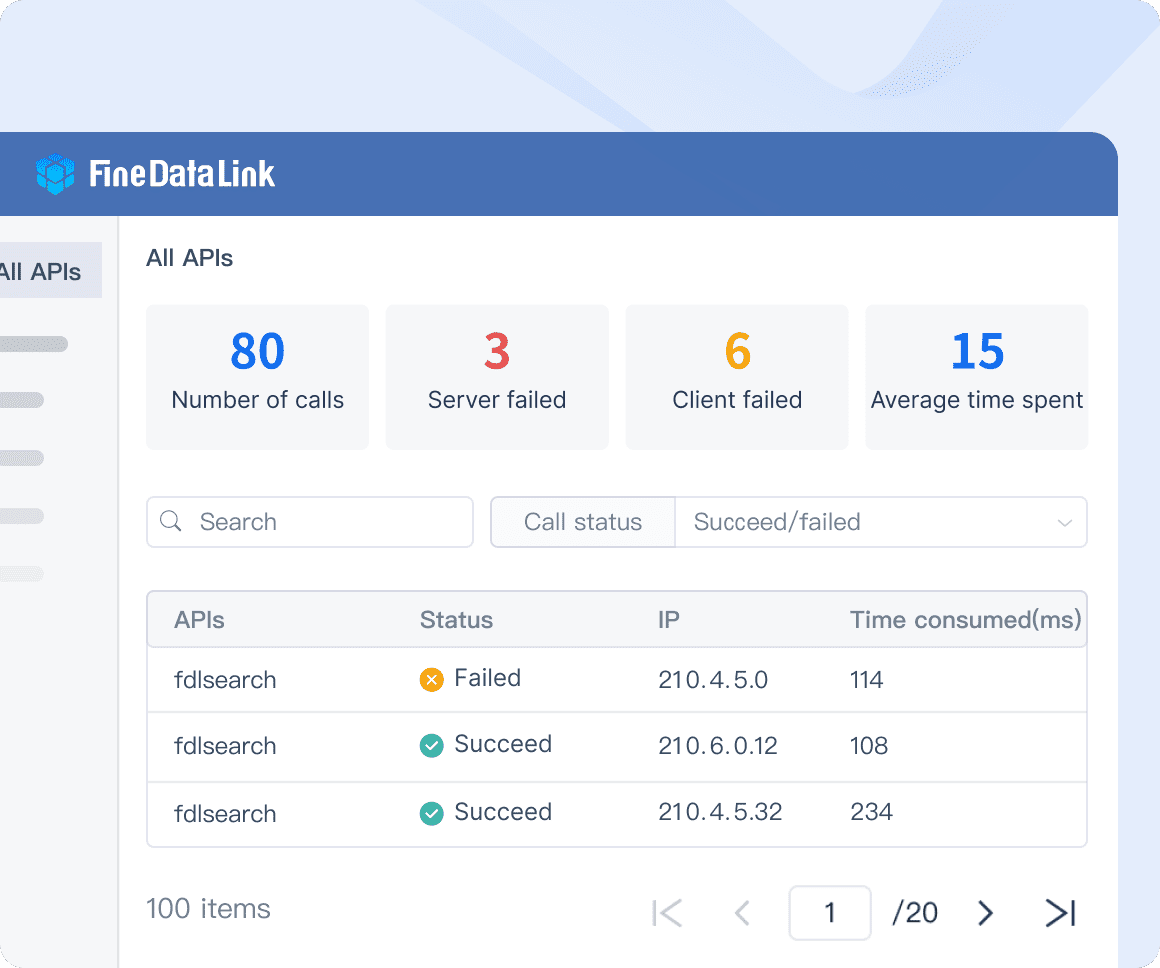
FineDataLink offers a low-code platform that reduces the need for extensive coding, making it accessible to a broader range of users. Its drag-and-drop functionality streamlines data processes, enabling you to focus on strategic tasks rather than getting bogged down by technical complexities. This ease of use fosters improved collaboration between departments, as everyone can access and work with a unified version of critical data.
Moreover, FineDataLink eradicates inconsistencies and eliminates duplicates, presenting you with a singular, dependable version of your data. This optimization reduces time-consuming bottlenecks, allowing your team to operate more efficiently and make informed decisions quickly.
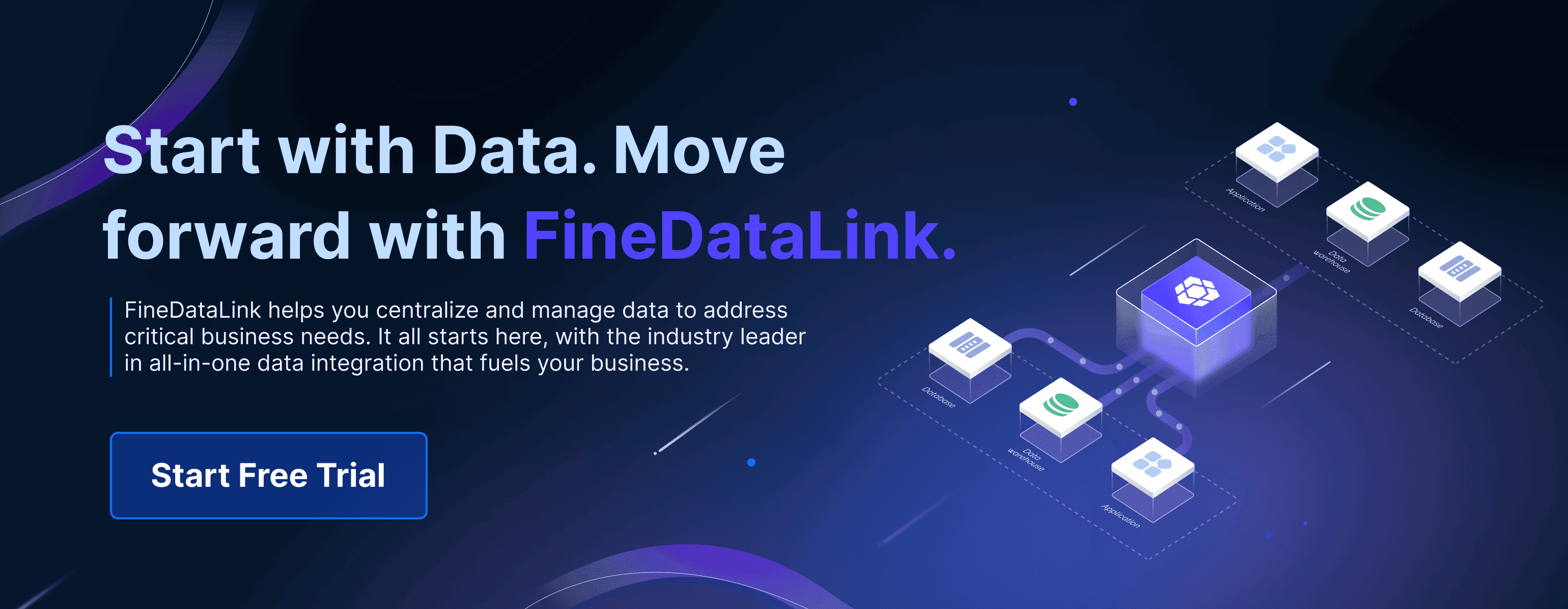
Cost Reduction
Implementing a robust data management framework with tools like FineDataLink can lead to substantial cost savings for your organization. By streamlining data processes and enhancing operational efficiency, you reduce the resources and time spent on manual data handling tasks. This efficiency translates into lower operational costs and increased productivity.
Additionally, FineDataLink supports real-time data synchronization, which minimizes latency and ensures that your data is always up-to-date. This capability reduces the need for costly data reconciliation efforts and minimizes the risk of errors that could lead to financial losses.
By investing in a comprehensive data management framework, you not only boost operational efficiency but also achieve significant cost reductions. This strategic approach allows you to allocate resources more effectively, driving your organization toward long-term success and growth.
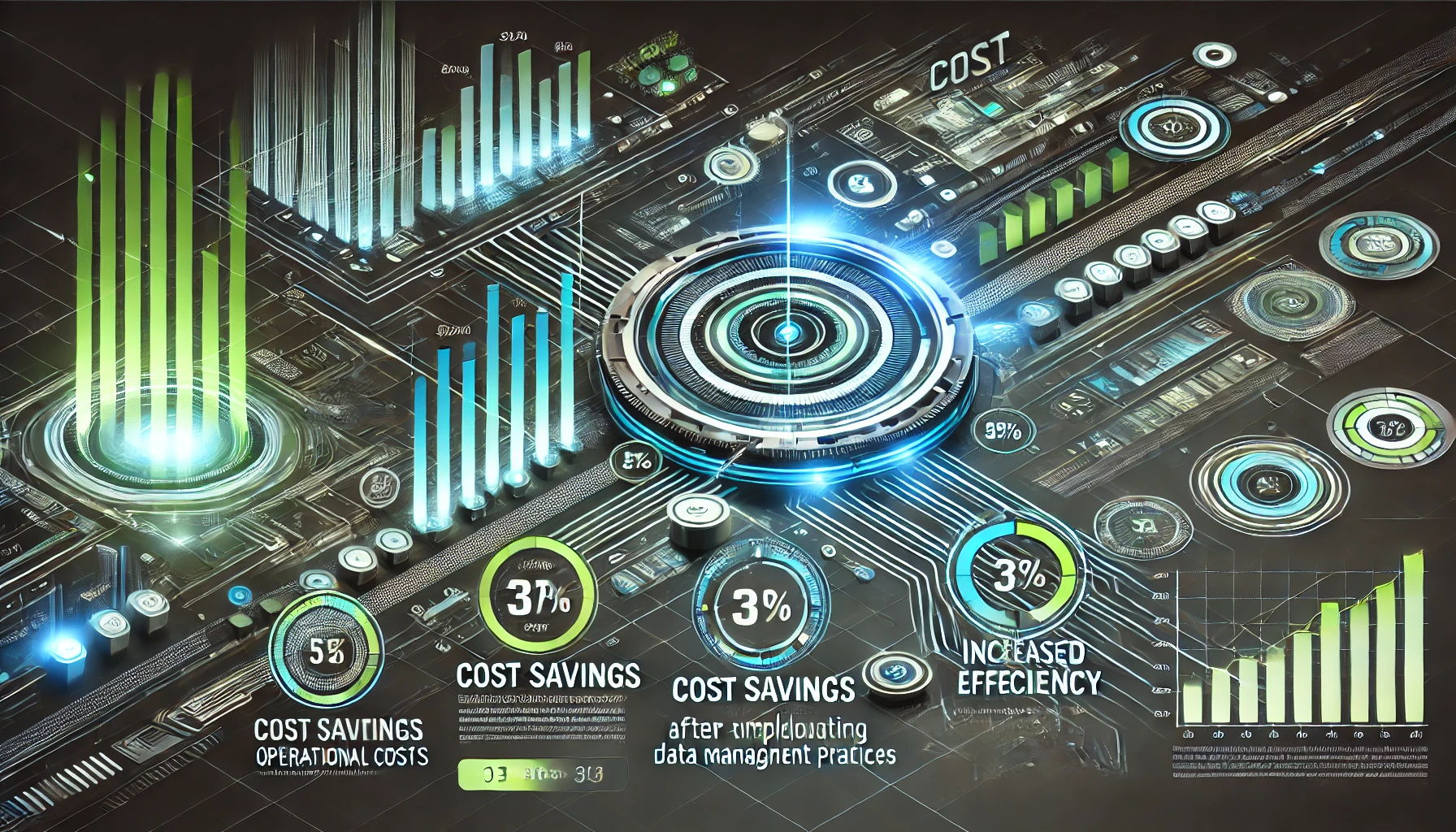
Ensuring Compliance and Security by Data Management Framework
In today's regulatory landscape, ensuring compliance and security is paramount for any organization. A robust data management framework plays a crucial role in achieving these objectives. By implementing such a framework, you can effectively manage data in accordance with various regulations, safeguarding your organization from potential legal and financial repercussions.
Regulatory Compliance
Regulatory compliance is a critical aspect of data management. Laws like GDPR and HIPAA set stringent standards for data protection and privacy. Non-compliance with these regulations can lead to hefty fines and damage your organization's reputation. A data management framework helps you navigate these complex requirements by establishing clear guidelines and processes for handling sensitive information.
"Compliance with regulations like GDPR, CCPA, and HIPAA is critical. Companies must implement security measures, including data encryption, strong access controls, and regular system updates."
By adhering to these standards, you ensure the confidentiality, integrity, and availability of protected health information (PHI) and personal data. This not only protects your organization from legal penalties but also builds trust with your clients and stakeholders.
Risk Management
Effective risk management is essential for maintaining data security. A data management framework provides a structured approach to identifying and mitigating potential risks. By implementing security measures such as data encryption and access controls, you can protect your data from unauthorized access and breaches.
"HIPAA compliance involves fulfilling the requirements of the Health Insurance Portability and Accountability Act of 1996 and related legislation."
Regular system updates and audits further enhance your security posture, ensuring that your data remains protected against evolving threats. By proactively managing risks, you safeguard your organization's assets and maintain its reputation as a trustworthy entity.
Integrating tools like FineDataLink into your data management framework can enhance your risk management capabilities. FineDataLink simplifies data integration tasks, ensuring seamless data flow and reducing the likelihood of data silos. This streamlined approach minimizes vulnerabilities and enhances your organization's overall security.
Best Data Management Framework Practices for Implementation
Implementing a data management framework effectively requires a strategic approach. By following best practices, you can ensure that your framework not only meets your organization's needs but also maximizes the potential of your data assets.
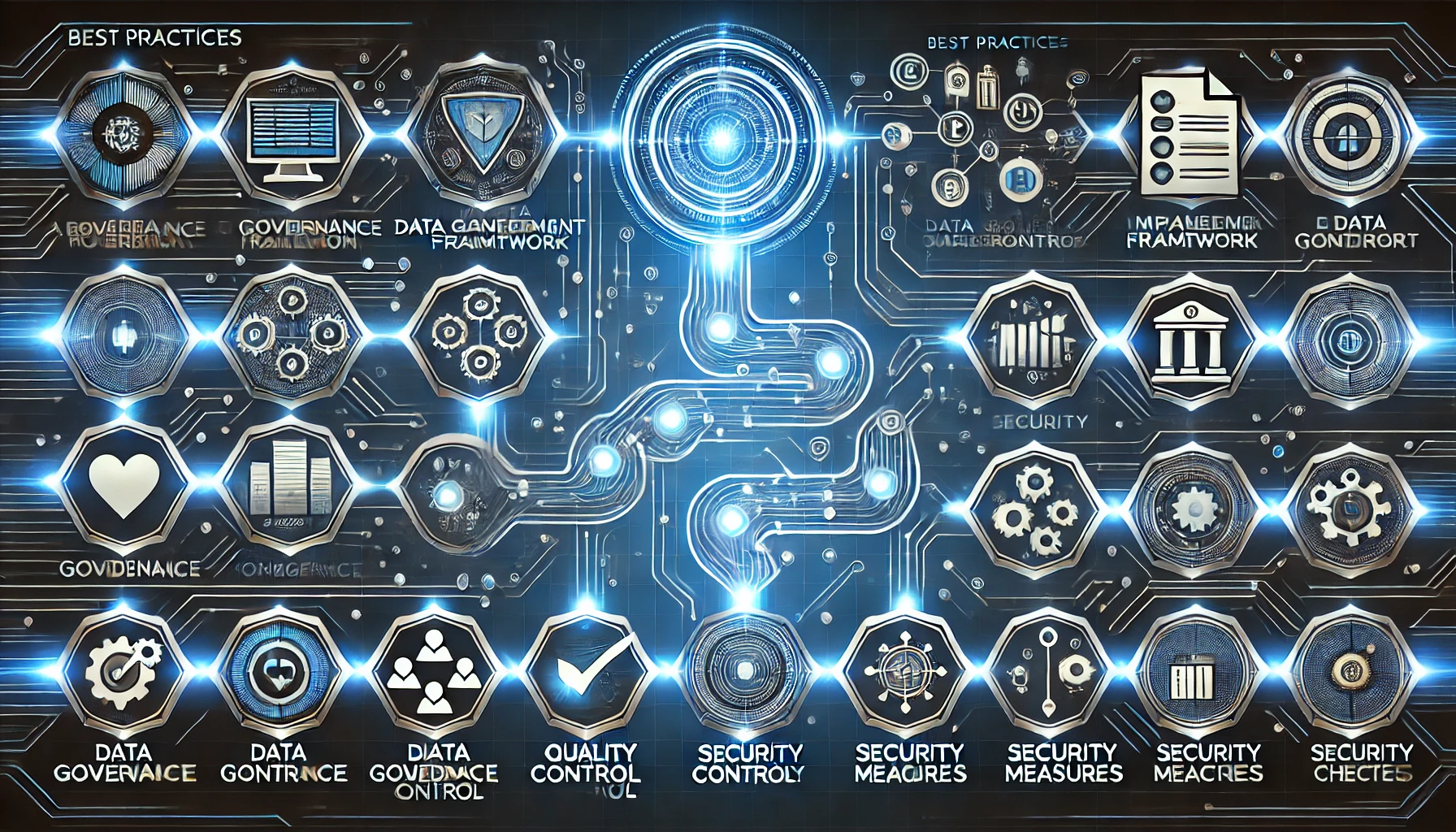
Establishing Clear Objectives
Start by defining clear objectives for your data management framework. Identify what you aim to achieve with your data, whether it's improving data quality, enhancing security, or boosting operational efficiency. Clear objectives provide direction and help you measure success. They also ensure that everyone in your organization understands the purpose of the framework and their role in achieving these goals.
- Define Goals: Outline specific, measurable goals for data management.
- Align with Business Strategy: Ensure that your data objectives align with your overall business strategy.
- Communicate Objectives: Share these objectives with all stakeholders to foster a unified approach.
Involving Stakeholders
Engage stakeholders from various departments to ensure a comprehensive approach to data management. Stakeholders bring diverse perspectives and expertise, which can enhance the framework's effectiveness. Their involvement also promotes buy-in and reduces resistance to change.
- Identify Key Stakeholders: Include representatives from IT, compliance, operations, and other relevant areas.
- Facilitate Collaboration: Encourage open communication and collaboration among stakeholders.
- Gather Feedback: Regularly seek feedback to refine and improve the framework.
Continuous Monitoring and Improvement
A data management framework is not a one-time implementation. It requires ongoing monitoring and improvement to remain effective. Regularly assess the framework's performance against your objectives and make necessary adjustments.
- Monitor Performance: Use metrics and KPIs to track the framework's effectiveness.
- Adapt to Changes: Stay informed about changes in regulations, technology, and business needs.
- Implement Improvements: Continuously refine processes and tools, such as FineDataLink, to enhance data integration and management.
By establishing clear objectives, involving stakeholders, and committing to continuous improvement, you can implement a data management framework that unlocks the full potential of your organization's data. This strategic approach ensures that your data remains a valuable asset, driving informed decision-making and strategic growth.
Case Studies and Success Stories of Data Management Framework
FanRuan's Implementation of FineDataLink
You can witness the transformative power of FineDataLink through FanRuan's successful implementation. This enterprise-level data integration platform has enabled the delivery of over 1,000 data projects, showcasing its efficiency and reliability. FineDataLink simplifies complex data integration tasks, allowing organizations to synchronize data in real-time across various platforms. This capability eliminates data silos and ensures seamless data flow, which is crucial for maintaining operational efficiency.
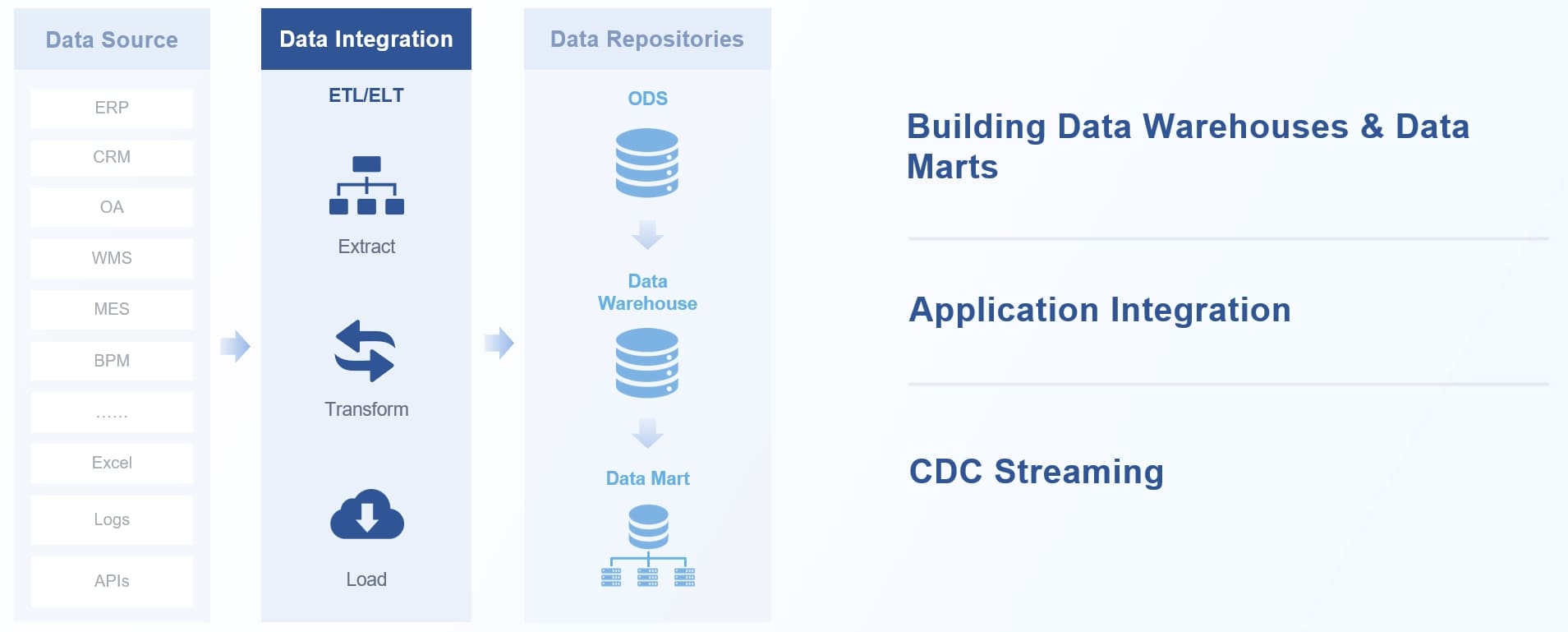
FineDataLink's low-code platform makes it accessible to a wide range of users. Its drag-and-drop functionality streamlines data processes, reducing the need for extensive coding. This ease of use fosters improved collaboration between departments, as everyone can access and work with a unified version of critical data. By eradicating inconsistencies and eliminating duplicates, FineDataLink presents you with a singular, dependable version of your data. This optimization reduces time-consuming bottlenecks, allowing your team to operate more efficiently and make informed decisions quickly.
Successful Data Management with FineBI
FineBI has proven to be a game-changer for organizations like Leysen and A.O. Smith. Leysen utilizes FineBI for self-service analytics, empowering business users and data analysts to connect, analyze, and share data across the organization. This capability facilitates informed decision-making and enhances productivity. FineBI transforms raw data into insightful visualizations, tracks key performance indicators (KPIs), identifies trends, and predicts future outcomes. This comprehensive data analytics platform enables organizations to harness the full potential of their data assets.
A.O. Smith has also benefited from FineBI's capabilities. By engaging 99.8% of employees in daily hazard rectification, A.O. Smith has enhanced safety awareness and driven digitalization. FineBI's real-time analytics capabilities provide instant access to critical information, allowing organizations to track KPIs, monitor trends, and respond quickly to changing business conditions. This agility enables timely decisions that drive operational efficiency and strategic growth.
FineBI's high-performance computing engine can process massive datasets and support over 10,000 users for online viewing. Its flexible ETL and ELT data processing modes, augmented analytics, and role-based access control ensure high data quality and security. By integrating FineBI into your data management framework, you can unlock the full potential of your data assets, empowering you to make informed decisions that propel your organization forward.
Common Challenges and Solutions of Data Management Framework
Overcoming Resistance to Change
Implementing a data management framework often encounters resistance from within the organization. You might face pushback due to fear of change or a lack of understanding about the benefits. To overcome this, you need to communicate the value of the framework clearly. Highlight how it enhances data accuracy, reliability, and security, which are crucial for informed decision-making.

- Educate Your Team: Conduct workshops and training sessions to familiarize your team with the framework's benefits. This helps in reducing apprehension and builds confidence in using new processes.
- Showcase Success Stories: Share examples of organizations that have successfully implemented data management frameworks. This can motivate your team by demonstrating tangible benefits.
- Involve Stakeholders Early: Engage key stakeholders from the beginning. Their involvement ensures that the framework aligns with organizational goals and addresses specific needs.
"Data can be a double-edged sword for technology companies," said a group of technology industry leaders. They emphasized the importance of skillful data management to harness its full potential.
By addressing resistance proactively, you can foster a culture of acceptance and collaboration, paving the way for successful implementation.
Addressing Data Silos with FineDataLink
Data silos present a significant challenge in managing data effectively. They occur when data is isolated within different departments or systems, hindering access and integration. FineDataLink offers a robust solution to this problem by providing seamless data integration across platforms.
- Real-Time Synchronization: FineDataLink enables real-time data synchronization, ensuring that all departments have access to the most current information. This eliminates the delays and inconsistencies associated with data silos.
- Low-Code Platform: The platform's low-code approach simplifies complex data integration tasks. You can use its drag-and-drop functionality to streamline processes without extensive coding knowledge.
- Enhanced Collaboration: By breaking down data silos, FineDataLink fosters improved collaboration across departments. Everyone can work with a unified version of data, leading to more informed decision-making.
The U.S. Bureau of Labor Statistics projects a 52% employment growth for database administrators and architects from 2020 to 2030. This highlights the increasing demand for effective data management solutions like FineDataLink.
By leveraging FineDataLink, you can address data silos effectively, ensuring seamless data flow and enhancing your organization's operational efficiency.
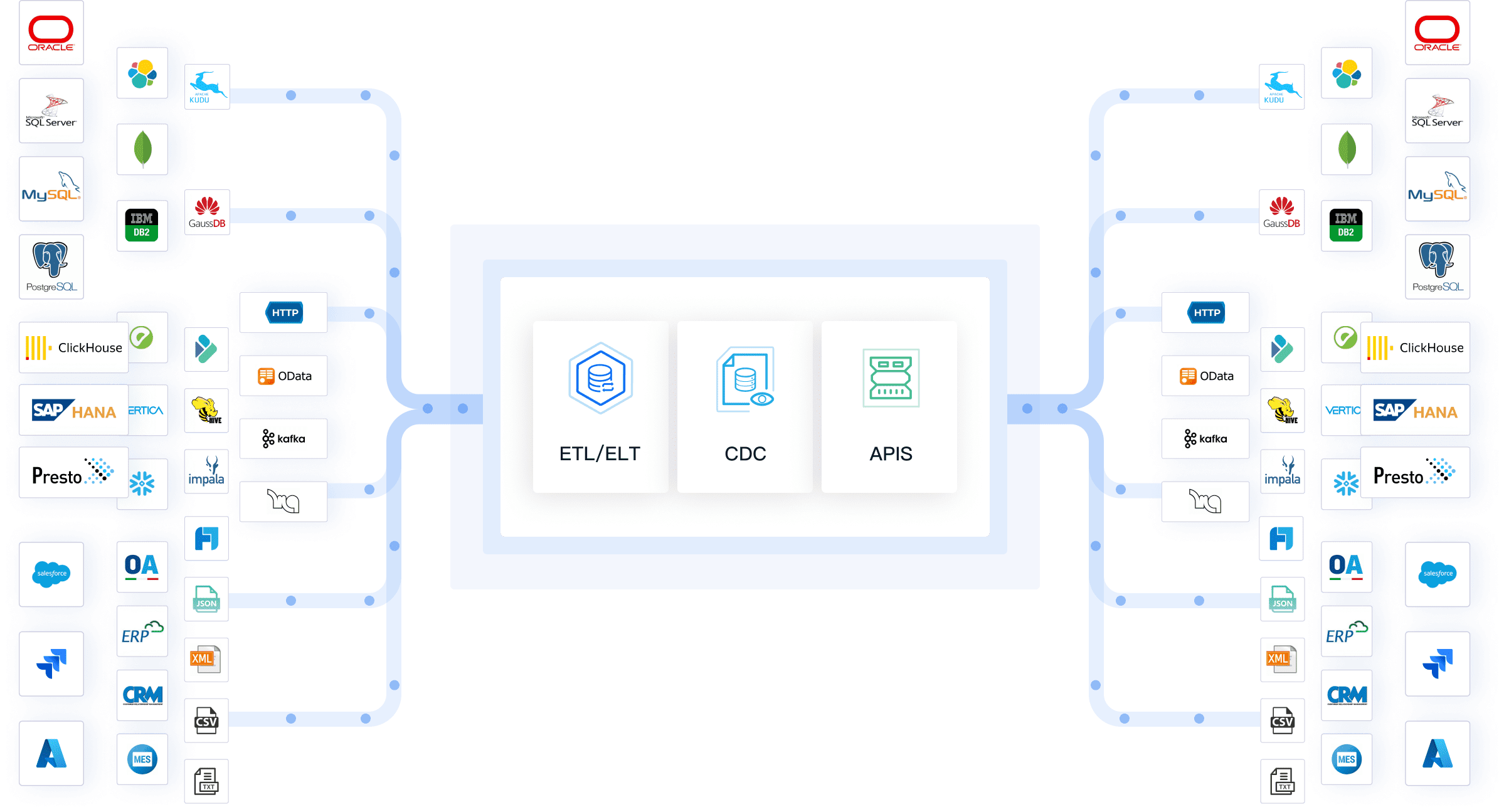
Future Trends in Data Management Framework
AI and Machine Learning Integration
You stand at the forefront of a data management revolution, where Artificial Intelligence (AI) and Machine Learning (ML) are transforming how you handle data. These technologies automate repetitive tasks, allowing you to focus on strategic decision-making. AI and ML enhance data quality by identifying patterns and anomalies that might escape human detection. This leads to faster insights and improved efficiency.
You can leverage AI-driven analytics to gain deeper insights into customer behavior, market trends, and operational efficiencies. This empowers you to make data-driven decisions with confidence.
"AI and ML revolutionize data management, offering increased efficiency, improved data quality, and faster insights," as highlighted in recent studies.
By integrating AI and ML into your data management framework, you position yourself to harness the full potential of your data assets. This proactive approach ensures you remain competitive in an ever-evolving business landscape.
Cloud-Based Solutions
Cloud-based solutions have become a cornerstone of modern data management frameworks. They offer you unparalleled accessibility and speed, enabling you to access data from anywhere at any time. This flexibility supports remote work and collaboration, ensuring your team remains productive regardless of location.
You benefit from enhanced security features, such as encryption and access controls, which protect your data from unauthorized access.
"Cloud-based solutions are reshaping data management, offering scalability, cost-effectiveness, and enhanced security," according to industry experts.
By adopting cloud-based solutions, you ensure your data management framework remains agile and responsive to changing business needs. This strategic move positions you to capitalize on emerging opportunities and drive long-term growth.
Adopting a data management framework is crucial for your organization. It ensures data accuracy, reliability, and compliance with regulations like GDPR and HIPAA. By prioritizing data management, you secure data, avoid legal liabilities, and enhance decision-making. This proactive approach builds trust and supports long-term success. As data practices evolve, adaptability becomes essential. Embrace the ongoing changes to maintain a competitive edge. Implementing robust data governance frameworks ensures transparency and fairness, fostering ethical practices. Your commitment to effective data management will drive informed decisions and strategic growth.
Click the banner below to try FineBI for free and empower your enterprise to transform data into productivity!
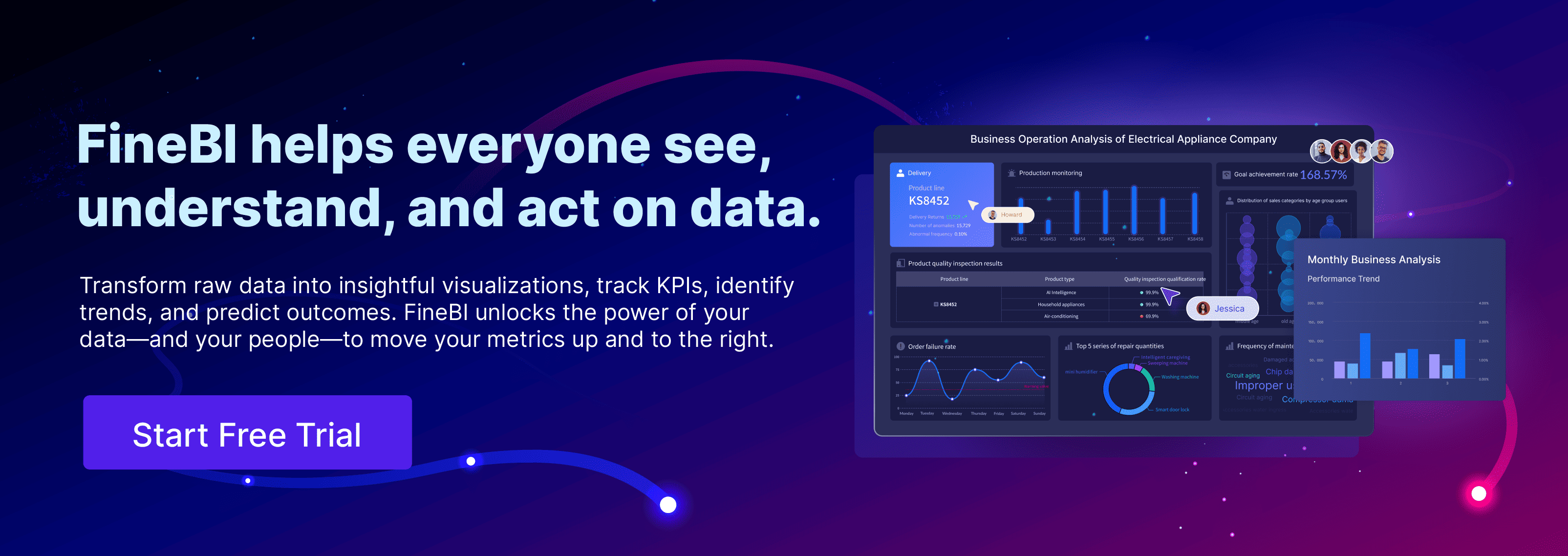
Continue Reading about Data Management
Enhancing Analysis with Effective Data Cleaning Techniques
What Does a Data Management Specialist Do?
Understanding Engineering Data Management
Essential Guide to Supplier Data Management Best Practices
FAQ

The Author
Howard
Data Management Engineer & Data Research Expert at FanRuan
Related Articles

Best Data Lake Vendors For Enterprise Needs
Compare top data lake vendors for enterprise needs. See which platforms offer the best scalability, integration, and security for your business.
Howard
Dec 07, 2025

Top Data Ingestion Platform Compared
Compare the top 7 data ingestion platforms, including real-time features, integration, scalability, and pricing to find the best fit for your business.
Howard
Dec 04, 2025
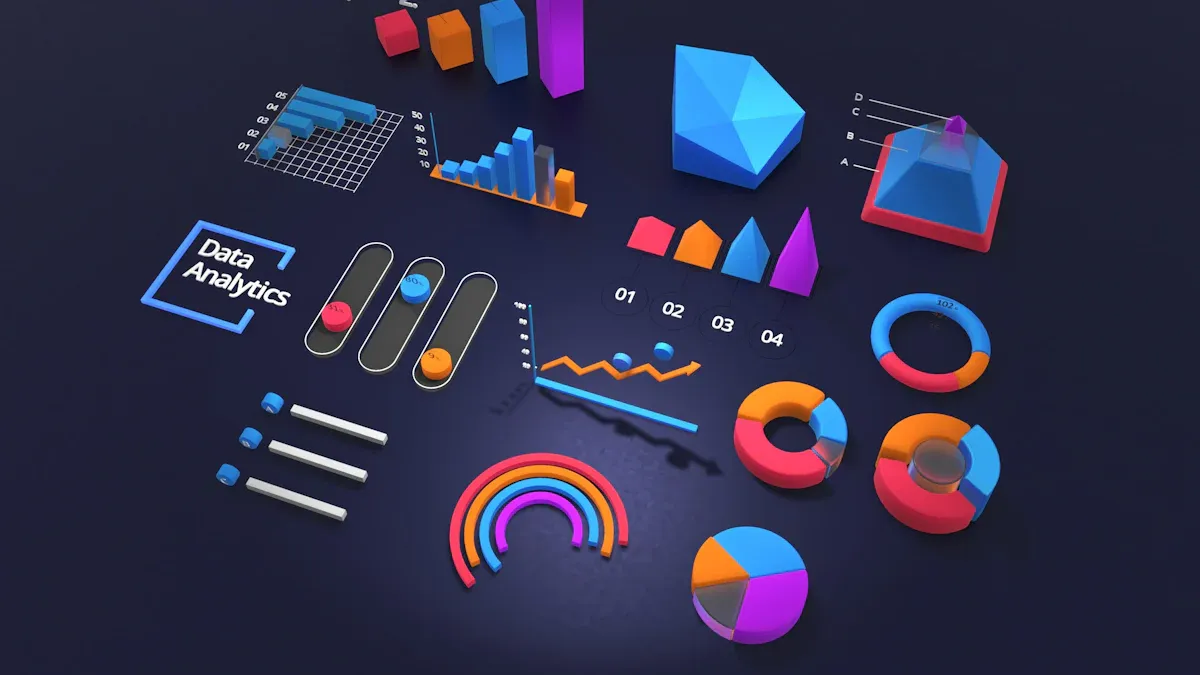
Best Data Lake Companies For Enterprise Needs
Compare top data lake companies for enterprise needs. See which platforms excel in scalability, integration, security, and analytics for businesses.
Howard
Dec 04, 2025



